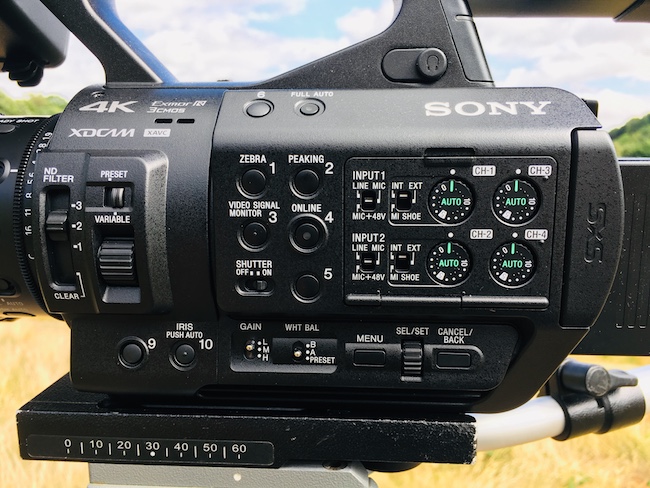
Gear review: If you could make a Sony EX1 into a 4K camera, would you buy one? Read on because the Sony PXW-Z280 could be just what you're looking for.
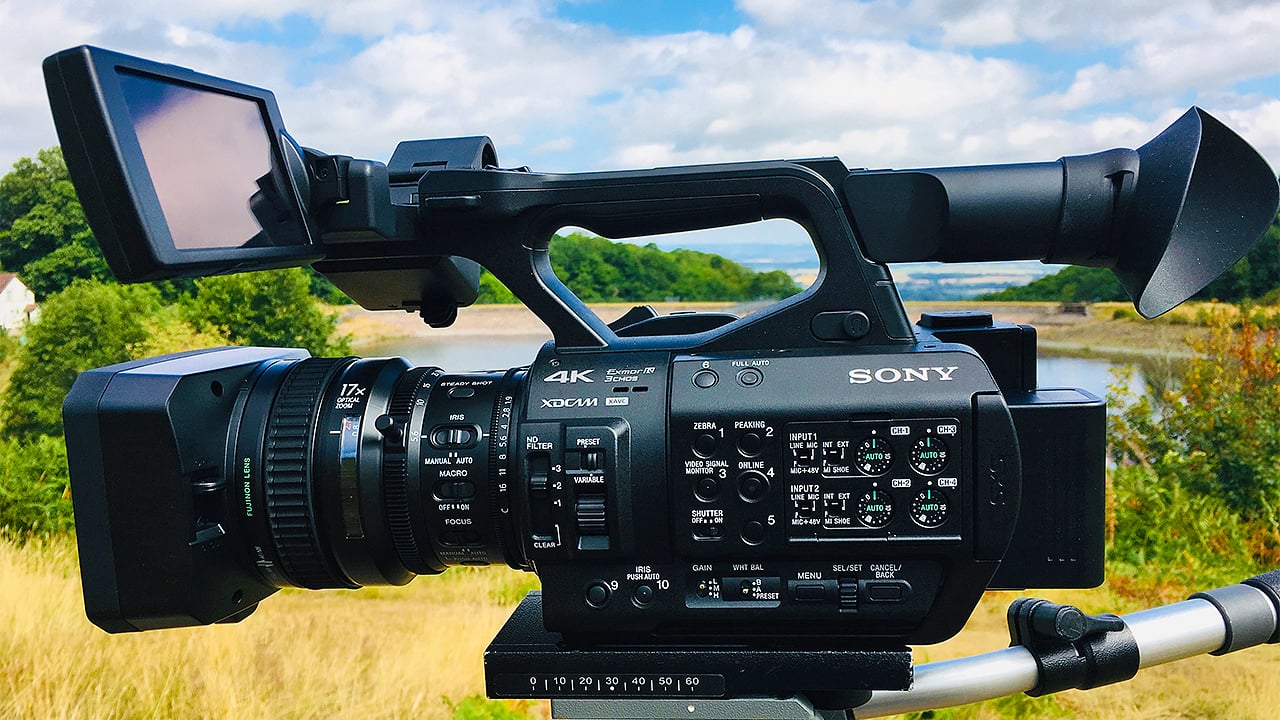
The PMW-EX1 and PMW-EX3 are two of Sony's most successful camcorders. When they were current, if you wanted a truly professional camcorder with a manual lens you had to own an ENG type camera with a B4 lens. The EX series literally changed the market overnight, with two three-chip camcorders that not only had manual lenses, but had incredibly high picture quality too. In fact so good was the EX series that they are still producing excellent results now, 11 years after initial launch.
Although the EX series was superseded by other models, still using the same chips incidentally, we are now in an increasingly 4K world. And while the talk of the town still seems to remain with large chip cameras, there really is a market for a workhorse do-everything 4K camera. Enter the PXW-Z280.
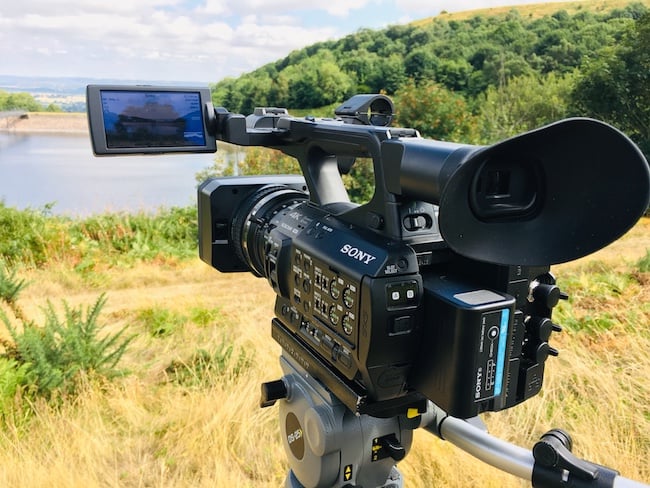
Sony PXW-Z280 First impressions
The PXW-Z280, at first glance looks like, well, a hyper EX1. There are some big differences however. The first is that when you pick up the Z280 you very quickly discover that this is one robust piece of kit. It's weighty and feels very solid.
The stand-out feature of the Z280 is the Fujinon lens. It's big and has the now familiar manual iris, focus, and zoom controls. The focus control can be switched between an infinitely rotating ring, or one with end stops. The interesting thing about this lens design, which will be familiar to previous owners of the EX series, is that although these controls are manual, they actually control servos rather than having any true mechanical connection to the lens parts. The important thing is that you wouldn't know it in use.
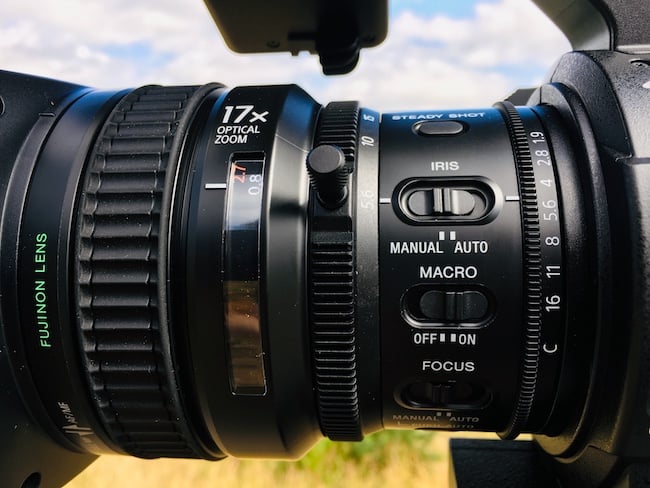
The rest of the body is furnished with clearly labelled, well spaced buttons. The ND filter control is big and chunky, as is the accompanying ND dial. The ND dial you say? Indeed, the PXW-Z280 incorporates a similar smoothly adjustable electronic ND filter to the one that has been seen previously in cameras such as the FS5. This is one of those features that I am finding more and more invaluable the more that I use it.
The left side of the body is also home to audio controls for four channels. The camera has two XLR inputs, with a further two channels that are fed by compatible wireless microphone receivers that fit onto the hotshoes on the handle.
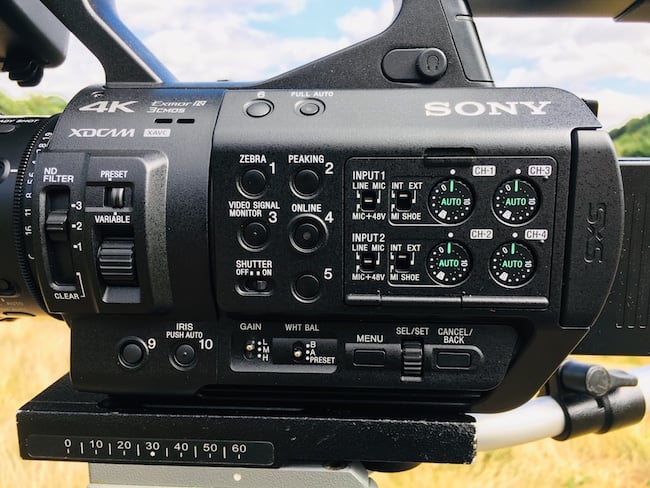
The carry handle is home to the now familiar flip out style LCD display, which whilst in its viewing configuration reveals controls for accessing the setup menus and clip playback. The rear of the body features an OLED viewfinder. Beneath this is a large on/off power switch. There is also an SDI output, timecode/genlock in/out, HDMI out, and Ethernet.
On the right side of the camera is the hand grip with record start/stop and a zoom rocker. Unlike many of Sony's recent cameras, this is fixed and is not rotatable.
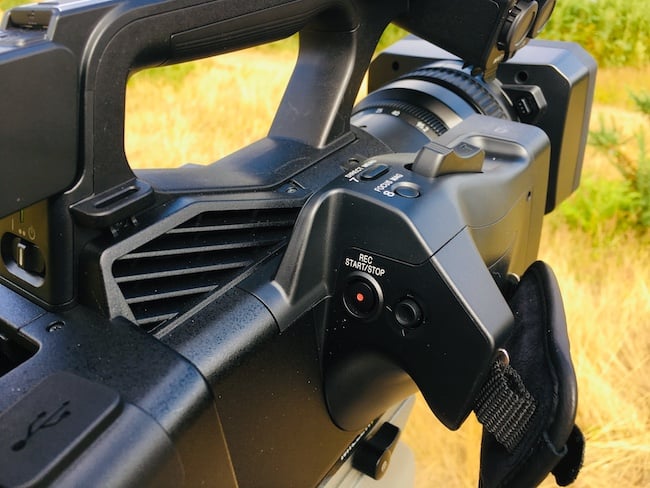
The layout is eminently functional and holds no surprises. But there's no doubt when holding it, at 3.0kg, it is a serious bit of kit.
Power draw for the camera varies between 24W and 31W depending on the LCD/viewfinder configuration you are using, so it is a little more heavy on battery uses than some other recent camcorders.
The sensor block
The continuing trend at the moment is for cameras to use larger chips but in a single bayer configuration. The advent of the single high performance CMOS is what has lead to large chip, yet compact body camcorders to be possible. The PXW-280 eschews this trend by featuring 1/2" chips. Note the plural, since this is a three-chip CMOS prism arrangement.
This offers a number of advantages over single chip designs such as supplying true 4:4:4 colour right from the get go, as well as minimising any artefacts that can come as a result of debayering calculations. Smaller sensors such as these lend themselves better to three-chip configurations. But it also makes the design more complex. No doubt part of the reason for the camera's weight is due to a big block of glass in the form of the light splitting prism. What it does mean is that the Z280 should have no problems at all resolving a good 2000 TVL of resolution.
Power up
The PXW-Z280 powers upon very quickly indeed. For a camera aimed at news and documentary this is a very important consideration, and the Z280 passes the test with flying colours.
The flip out LCD display is clear and bright. Even outdoors in bright sunshine, whilst clearly there are limitations, I could still get by with it. Luckily the camera has the alternative in the form of the OLED viewfinder, which is actually a higher resolution than the larger LCD and works very nicely.
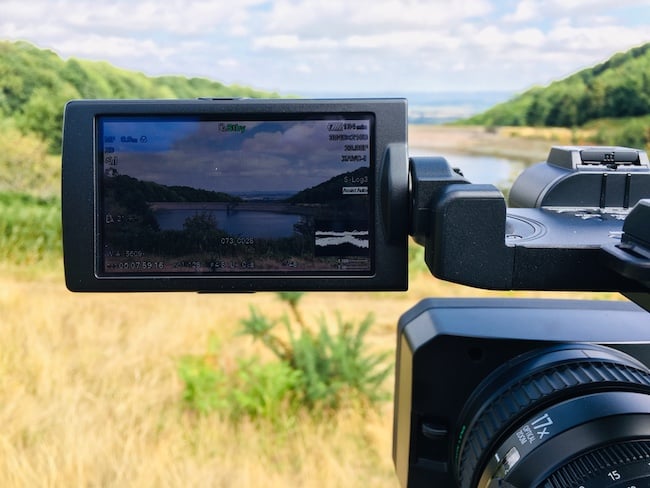
The menu system is on the whole pretty good, and will be familiar to users of other Sony cameras. As usual there is a user section that can be configured with your most used functions. The default configuration of this generally has the most often needed functions already to hand.
The lens feels good to use, with a nice smooth action. The control rings are a good size, and if like me you prefer to use three fingers on each of the controls, you'll be right at home. As I mentioned earlier, these control rings actually actuate servos rather than having any direct mechanical connection to lens parts. It's only if you move them extremely fast that you notice any lag, but even then it is barely anything. One thing is very certain, it was a lovely experience going back to this type of lens operation over DSLR style lenses or cine primes.
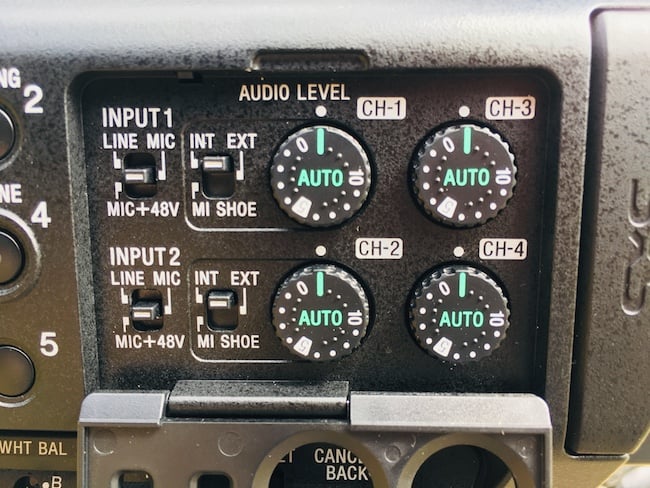
The glass on the Z280 goes from 5.6mm at the wide end, to 95.2mm at telephoto. It's a big range, and one that is super useful. Now, the big question is whether this is a constant f/stop across the range. In my tests I didn't notice any appreciable loss of light. There is also no change in f/stop on the LCD display, as would normally happen on any other camera I have used if it lost light through the zoom range.
I have been told by some people that it drops to f/5.6, but I do not agree with this at all, since such a drop off would be very noticeable. As you can see from my example shots at the end of this review where I go from full telephoto to full wide, there is no appreciable change in exposure. I haven't been able to confirm the precise drop off, but at most I would say it falls to f/2.8, just like the previous EX cameras. Rather impressive given the price of the camera and the focal range on offer.
Autofocus performance was good. The camera has facial tracking, and this can be either turned off, told to prioritise faces, or to focus entirely on facial features. In practice it works pretty well, even if the subject is a fair distance away. It's not perfect: no autofocus is currently. But tracking subjects accurately is a challenge for any camera operator. These new options give us an ability to be flexible. In HD focus was critical, in 4K even more so. Any error in the tracking is noticeable, so it is good to see how these systems are becoming better.
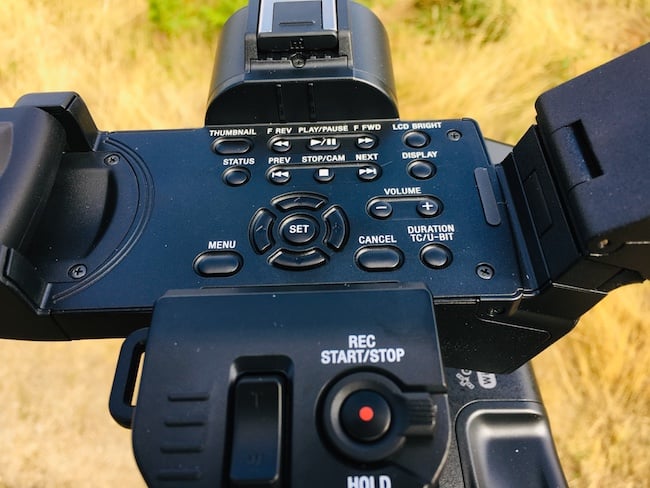
Recording options
The PXW-Z280 has a very large range of recording options, from lowly DVCAM all the way up to 4K (UHD for the pedants). But gone are the days of struggling with highly compressed codecs with low colour precision. The Z280 has no such foibles. With this camcorder you can record up to 600Mbps 422 4K intraframe with 10-bit colour resolution at up to 60p. This, finally, is a do-it-all camera that gives you some of the highest quality recording options available anywhere.
HDR is taken care of in a couple of ways. In the menus you set the base recording type to either SDR or HDR. This cause me a bit of confusion at first. Because I'm a man, I didn't read the manual until I had to. At first I couldn't find out how to shoot using the feature listed SLog3. It took me a bit of playing around, but you need to set the camera to HDR mode first, and then tell it that you want to record Slog3 instead of HLG. By default the camera will apply an assistive LUT to the LCD monitor output to help with monitoring and exposure.
Physical recording is to SxS cards. It is possible to record both 4K and HD versions of the same clips to the same SxS card simultaneously. You can also record 4K to the SxS card while recording proxy files to SD. By way of an adaptor you can also record to XQD cards. Lastly you can also record 2 copies of the footage simultaneously to two SxS cards.
A wireless future
The PXW-Z280 is designed to work in a world where footage needs to be dealt with yesterday. By way of a subscription to XDCAM Air it is possible for the Z280 to upload footage via a dual link cellular connection directly to the cloud. I didn't have an opportunity to test this, but it is clearly an advantage for those working on breaking stories.
But the connectivity doesn't end there. The camera can upload to a remote FTP server while it is shooting. A Content Browser Mobile app allows clips to be reviewed and logged via a smartphone, as well as being able to control the camera itself.
Offloading footage can be done a few ways. For some reason I couldn't get my Mac to recognise the camera when it was connected via USB. I have a strong feeling this was an issue with my computer and not the camera itself since the USB connection dialogue appeared as it should do. Not to worry, however. The Z280 can have a USB3 hard drive plugged directly into it, and you can then tell it to copy the footage over to your storage device. The only drawback to this is that it's an all or nothing approach, so if you then record some additional clips you will need to copy the whole card again rather than selecting just the new shots. When performing this transfer you can elect to have error correction turned on. This gives you file integrity protection at the expense of transfer speeds.
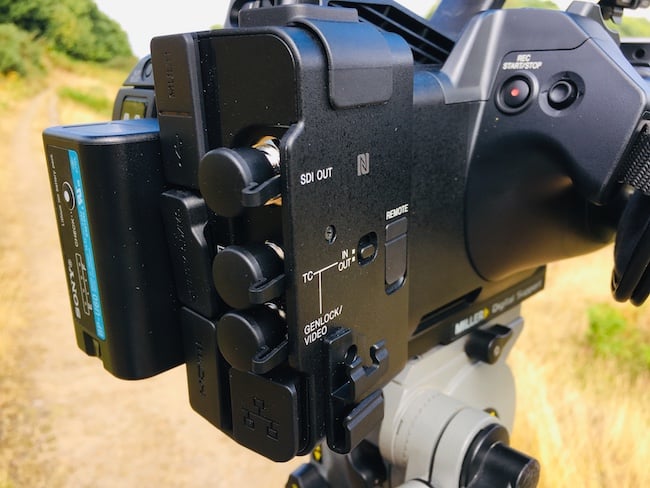
Picture performance
I'm going to lay my cards on the table here. I don't believe it is possible to buy a badly performing camera today. Which is why I focus so much on the usability of cameras in my reviews rather than pixel peeping.
With that said, as you can see in the examples below, the camera performs incredibly well even at +18db (for those who are obsessed with cinema cameras I am using the correct parlance for an electronic camera here). Sony rates the camera as having a S/N ratio of 63db. This is a camera with 1/2" 4K CMOS chips. That is an incredibly quiet figure for sensors with such a high pixel density, and is on par with some of the best 2/3" SD CCD cameras of the past. To compare this to its predecessor the EX1R, that camera had a S/N figure of 54db. In contrast the FS5 lists at 57db. In other words, this is progress.
Is the PXW-Z280 a low light monster? Yes and no. No, it isn't an A7SII, but at the same time you can hardly be disappointed by its performance. As you can see from the clips below, there's barely any difference in noise between 0db and +18db when using the in-built noise suppression. This can be tuned, but as you can see it does a very good job.
Lastly, about IR contamination. A few RSN readers asked me to look at this. From what I can ascertain the PXW-Z280 has none of the issues that its predecessor suffered from.
Like many similar cameras, I feel that it comes set with the electronic detail enhancement too high out of the box. Just like the EX series I feel that this camera doesn't really need this enhancement, and I dialled it right down. I prefer a more natural level of detail. But your tastes will vary, and the camera comes with a vast amount of picture profile setup options to fine tune things.
In the autofocus shots of my test video below, there is some noise visible. These were shot using Slog3 and corrected with a basic LUT. Put this down to user error in that I underexposed, hence some of the noise being emphasised.
Lastly, regarding the lens. There does appear to be some chromatic fringing on very bright highlights, particularly in the shot of the flickering water. There doesn't appear to be an option for in-camera correction for this, so it is something to be aware of. But keep in mind the range of this lens and what it is being asked to do for the cost, and this is a minor price to pay.
Conclusions
The PXW-Z280 is in my opinion an EX series camera for the 4K age. It is very easy to get all too caught up in the drive for 'go big or go home' when it comes to sensors. The Z280 is a camera that gives a flexibility of operation that is simply unmatched by any of the alternative cine influenced cameras, and it offers a lot more than I can possibly cover fully in this article. You don't have to think about which lens to use, or carry around a huge bag of accessories for every occasion. You don't need a cage, and you don't need an external recorder to get the highest quality recording. The PXW-Z280 is simply a pleasure to use, and a welcome relief from the complexity of cine style cameras. Thank you, Sony.
Tags: Production


Comments